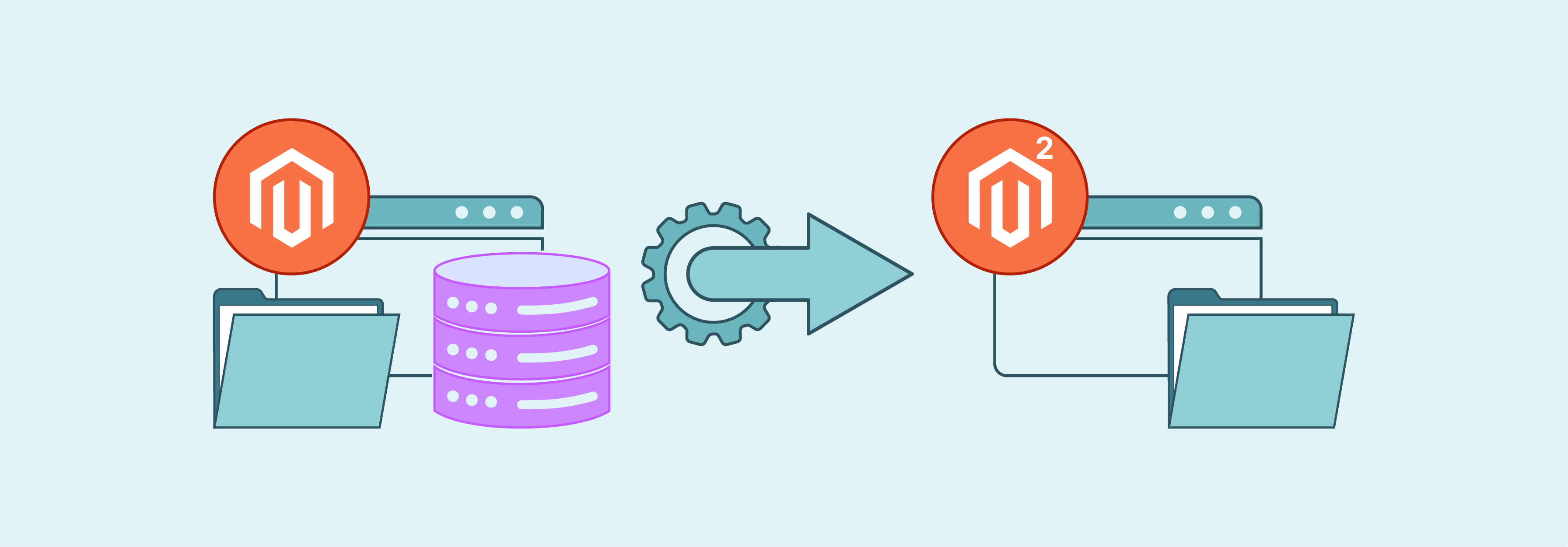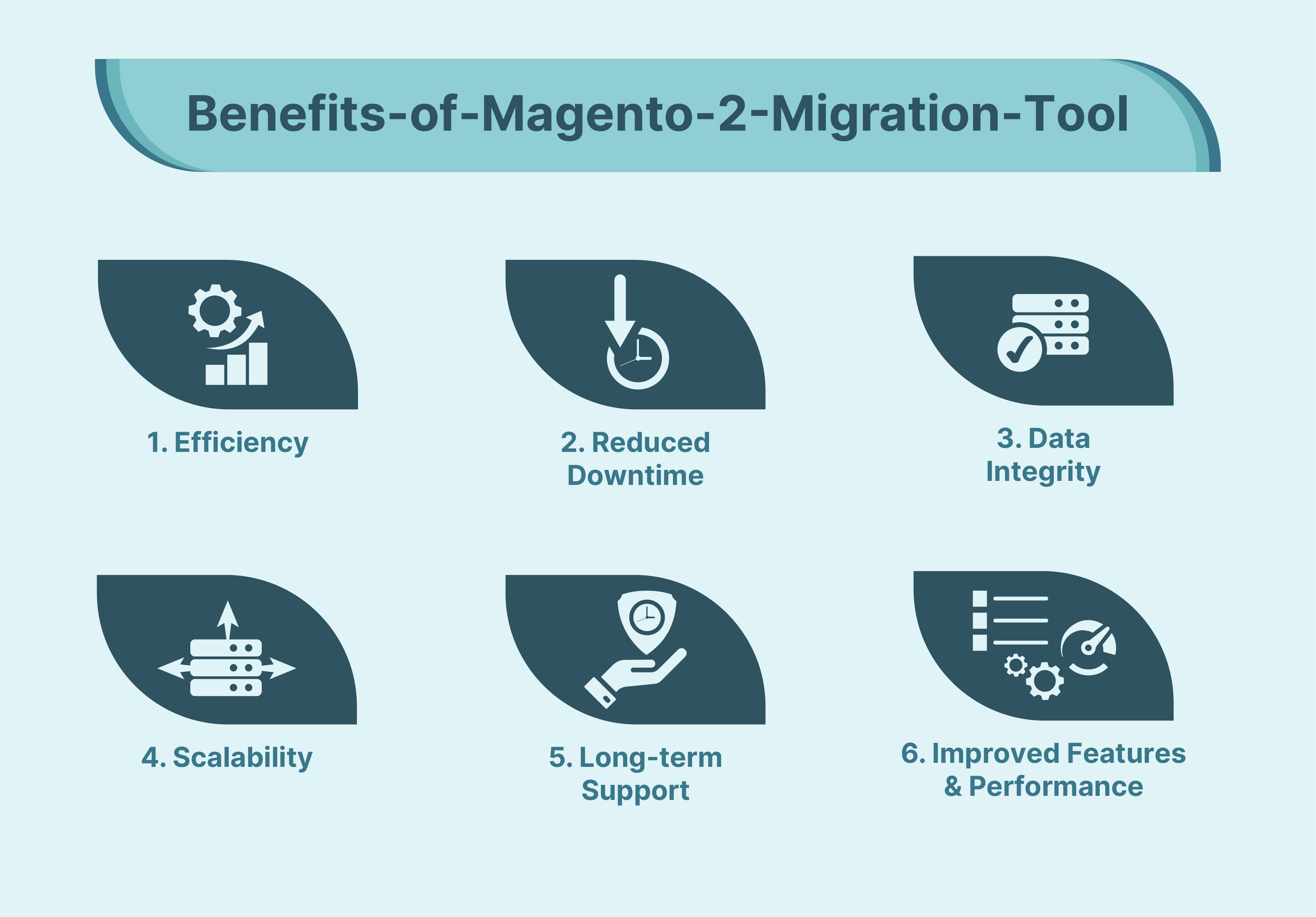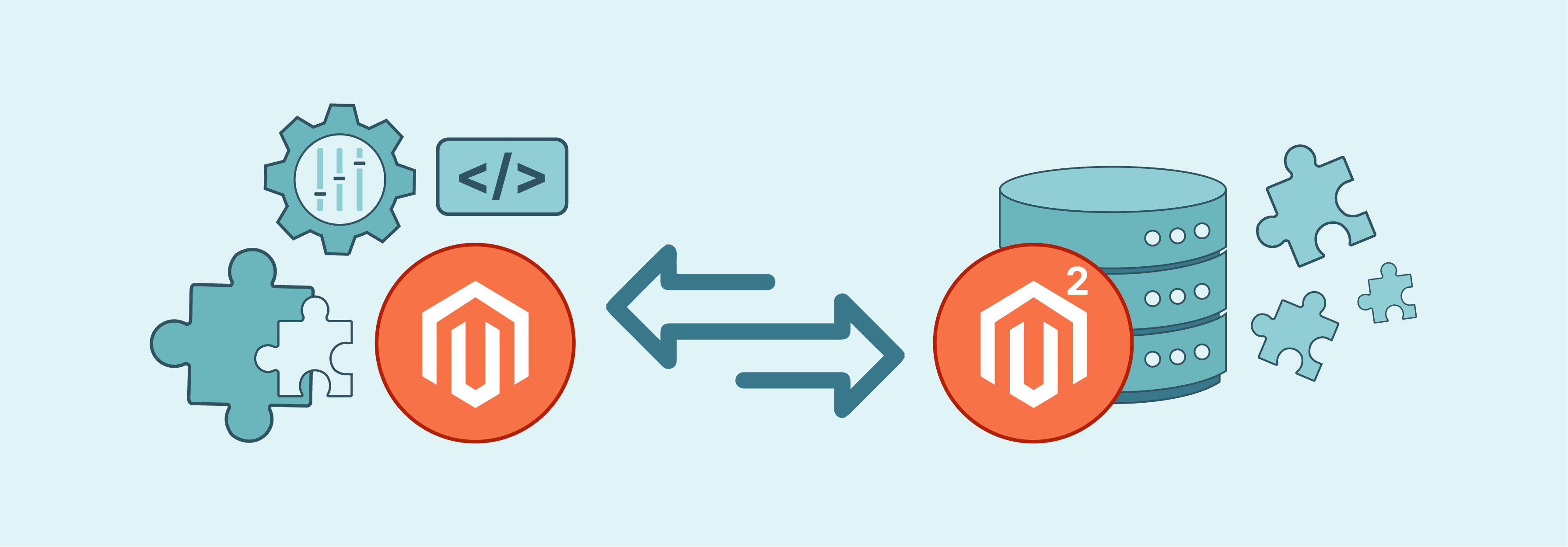
Magento 2 Migration Tool: Key Features and System Requirements
Are you struggling with migrating data and configuration settings? Use the Magento 2 migration tool to simplify the Magento 1 to Magento 2 migration by automating transfers.
In this article, we will explore the key features, benefits, and system requirements of the Magento 2 migration tool.
Key Takeaways
-
Understand what the Magento 2 Migration Tool is and its purpose.
-
Learn about the key features of the Magento 2 Migration Tool.
-
Discover the benefits of using the Migration Tool for your Magento store.
-
Get an overview of how the Magento 2 Migration Tool works.
-
Familiarize yourself with the system requirements for installing and using the tool.
What is the Magento 2 Migration Tool?

The Magento 2 Migration Tool is a utility provided by Magento open source. It facilitates the migration of data from Magento 1.x to Magento 2.x.
The tool is useful for merchants and developers. It helps them transition their online stores from the older Magento 1 platform to the newer and more advanced Magento 2 platform.
The Magento migration service involves transferring various data from the Magento 1 database to the Magento 2 database, such as:
-
Products
-
Customers
-
Orders
-
Settings
-
Store configurations
-
Other essential information.
The Magento 2 data migration tool automates this process. The process is made more efficient and less prone to errors compared to manual migration methods.
Key Features of Magento 2 Migration Tool
1. Data Mapping
The tool maps data from Magento 1 to Magento 2. It ensures that data fields are correctly matched between the two versions.
2. Delta Migration
Delta migration capability allows for incremental migration. It means that you can migrate only the changes made since the initial migration. The feature reduces downtime and ensures that your Magento 2 store stays up-to-date.
3. CLI Support
The Migration Tool offers a Command Line Interface (CLI). It allows users to execute Magento migration commands from the terminal or command prompt.
The feature enables automation and integration with deployment workflows. It makes the migration process more efficient and manageable. It is especially for larger stores with complex data structures.
4. Data Verification and Validation
After migration, the tool performs checks to ensure data integrity and completeness. It verifies that all data has been successfully migrated from Magento 1 to Magento 2.
It also validates the consistency of the migrated data. The feature helps identify any discrepancies or errors that may have occurred during the migration process. It allows for prompt resolution before going live with the Magento 2 store.
5. Selective Migration
The data migration tool package allows users to migrate specific data entities or components selectively. It is migrated based on their preferences and requirements.
The flexibility enables merchants to prioritize critical data or exclude unnecessary information. It streamlines the data migration process and reduces the workload.
6. Configuration Settings Migration
Along with data, the tool migrates configuration settings, including:
-
Store settings
-
Other customizations.
It ensures that your Magento 2 store maintains consistency with your Magento 1 setup. The feature minimizes the need for manual adjustments post-migration.
7. Extensions and Customizations Compatibility
The Migration Tool takes into account compatibility with Magento 1 extensions and customizations. It ensures that third-party extensions and custom code are migrated smoothly to Magento 2.
The feature minimizes disruptions to your store's functionality. It also preserves your investment in existing Magento 1 extensions and customizations.
Benefits of Magento 2 Migration Tool

1. Efficiency
The Migration Tool automates much of the migration process. It helps save time and effort compared to manual migration methods. It streamlines:
-
Data transfer
-
Configuration
-
Migration
-
Validation tasks.
The plugin enables a smoother transition to Magento 2.
2. Reduced Downtime
Features like delta migration minimize downtime during the transition period. It allows businesses to continue operations with minimal disruption while gradually moving to Magento 2.
3. Data Integrity
The data migration tool ensures data integrity by mapping and validating data fields between Magento 1 and Magento 2. It verifies that all essential data is accurately transferred to the new platform. The extension reduces the risk of data loss or corruption.
4. Scalability
Magento 2 offers improved performance and scalability compared to Magento 1. It allows merchants to handle increased traffic and expand their business. Businesses use the data migration tool to migrate to Magento 2. It helps them take advantage of these scalability enhancements. It supports their growth and expansion plans.
5. Long-term Support
Magento 1 reached its end-of-life in June 2020. It no longer receives official support or security updates from Adobe Commerce. Migrating to Magento 2 ensures ongoing support, security patches, and access to new features. It helps merchants maintain a secure and up-to-date online store.
6. Improved Features and Performance
Magento 2 introduces several:
-
New features
-
Performance improvements
-
Optimizations.
By migrating to Magento 2, merchants can leverage these enhancements. It helps them provide a better user experience. It also helps them optimize their store's performance and stay competitive.
How Does the Magento 2 Migration Tool Work?
1. Preparation
Before starting the migration process, you should prepare both the Magento 1 and Magento 2 environments. It includes ensuring that the Magento 2 store is installed and configured correctly. You should also ensure that any necessary extensions or customizations are compatible with Magento 2.
2. Installation
The Magento 2 Migration Tool needs to be installed in the Magento 2 environment. It typically involves downloading the Migration Tool package from the Magento website or repository. You should install the Magento migration tool according to the provided instructions.
3. Configuration
Once installed, the Migration Tool requires configuration settings. It helps establish a connection between the Magento 1 and Magento 2 databases. Users specify:
-
Database credentials
-
Paths to Magento 1 and Magento 2 installations
-
Other relevant parameters.
4. Data Migration

The migration process begins by transferring data from the Magento 1 database to the Magento 2 database. It maps data fields between Magento 1 and Magento 2. The feature ensures compatibility and data integrity.
5. Validation
After data migration is complete, the Migration Tool performs validation checks. It ensures that all data has been successfully transferred. It also ensures that data integrity is maintained. The process verifies the consistency of migrated data. It also identifies any discrepancies or errors that may require attention.
6. Configuration Settings Migration
Along with data, the data migration tool migrates configuration settings from Magento 1 to Magento 2. It includes:
-
Payment methods
-
Shipping methods
-
Other customizations.
It ensures that the Magento 2 store maintains consistency with the Magento 1 setup.
7. Extension and Customization Migration

The Migration Tool takes into account compatibility with Magento 1 extensions and customizations. It ensures that third-party extensions and custom code are migrated smoothly to Magento 2. It preserves your store's functionality and avoids compatibility issues post-migration.
8. Testing and Deployment
Once the migration process is complete, you should thoroughly test the Magento 2 store. It ensures that everything functions as expected. It includes testing:
-
Frontend functionality
-
Backend operations
-
Integrations with third-party services.
After testing, the Magento 2 store can be deployed and made live for customers.
System Requirements to Install the Data Migration Tool for Magento 2
1. Server Requirements
-
Operating System: Linux (specific distributions supported by Magento)
-
Web Server: Apache (with mod_rewrite enabled), Nginx
-
Database: MySQL (5.7 or later), MariaDB, Percona
-
PHP: 7.4.x (Magento 2.4.x), 7.3.x (Magento 2.3.x), 7.2.x (Magento 2.2.x)
-
PHP Extensions: PDO/MySQL, mbstring, mcrypt, mhash, simplexml, curl, gd2, ImageMagick 6.3.7 (or later) or both GD Library and Imagick
2. Magento 2 Requirements
-
Minimum RAM: 2GB (4GB recommended)
-
Composer: Dependency Manager for PHP
-
Elasticsearch: Required for advanced search features (optional but recommended)
3. Browser Support for Magento Admin Panel
Chrome, Firefox, Safari, Edge (latest versions)
4. Other Considerations
-
It is recommended that SSH access to the server be provided for command-line operations.
-
SSL certificate for secure transactions.
-
It's advisable to disable the Magento cache during the migration steps to avoid potential issues.
5. Additional Resources
Magento 2 official documentation provides detailed information on system requirements and compatibility for different Magento versions. The Magento 2 Migration Tool documentation offers specific guidance on installation, configuration, and usage.
FAQs
1. How can I access the Magento 2 Migration Tool on GitHub?
You can access the tool by visiting the official Magento GitHub repository at github.com/magento/data-migration-tool. The repository provides instructions and necessary files for download and installation.
2. What are the steps to configure the Magento 2 Migration Tool?
Download the data migration tool from GitHub. Then, prepare your Magento root installation directory. Edit the config.xml file with your database credentials and configurations. Finally, run the migration commands using the terminal.
3. How do I handle username and password configurations for the migration tool?
Update the config.xml file in the Magento 2 root directory with your database username and password. Ensure these credentials are secure and correctly configured to enable data migration.
Summary
The Magento 2 migration tool automates data and configuration for efficient and less error-prone transfers. The article also uncovers several other points, including:
-
Key features of the Magento 2 migration tool include data mapping and delta migration.
-
Benefits of the Magento 2 migration tool include increased efficiency and reduced downtime.
-
The tool works by preparing both Magento environments and installing and configuring the tool.
-
System requirements of the Magento 2 migration tool include specific server configurations and PHP versions.
Want to upgrade your online store with ease using the Magento 2 migration tool? Utilize the benefits of the tool with managed Magento hosting.



